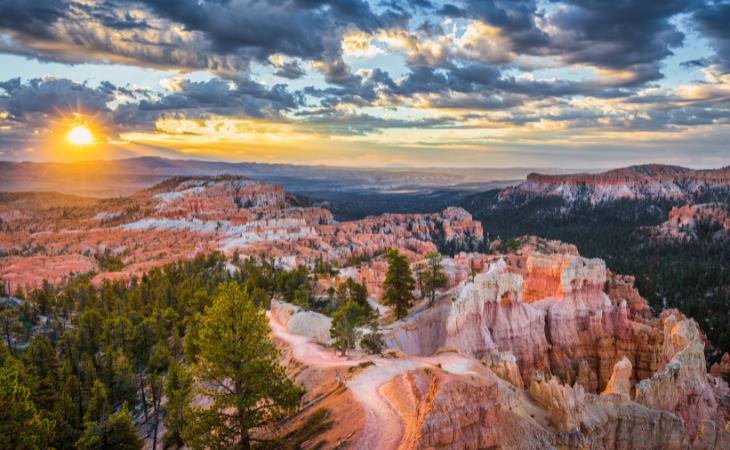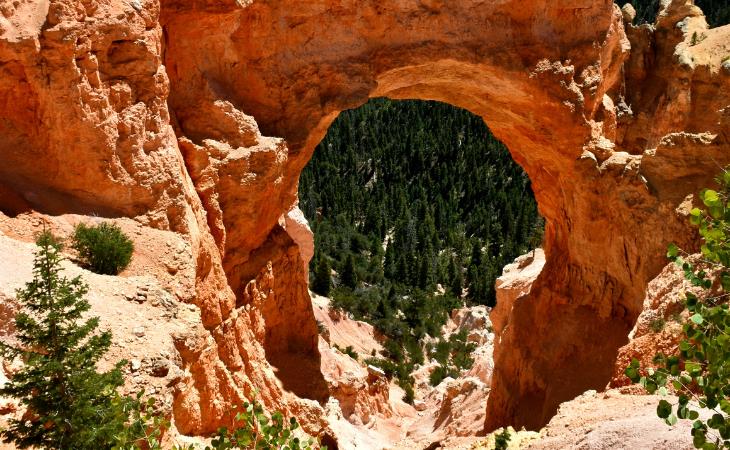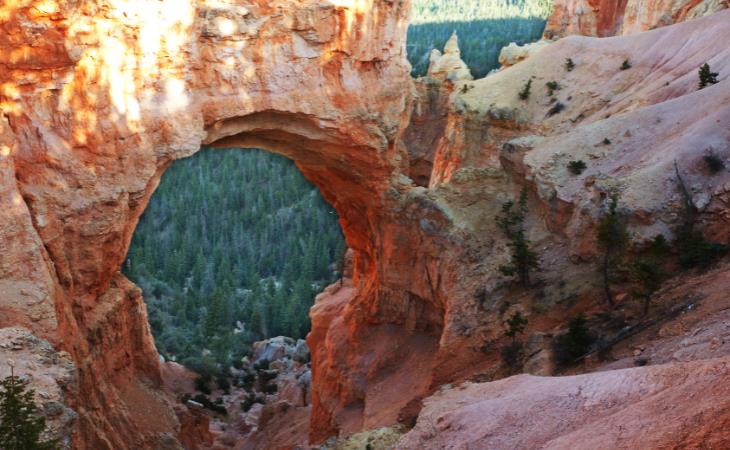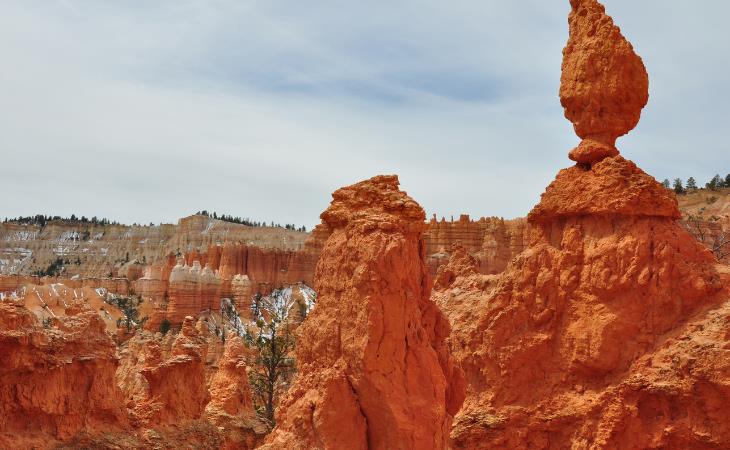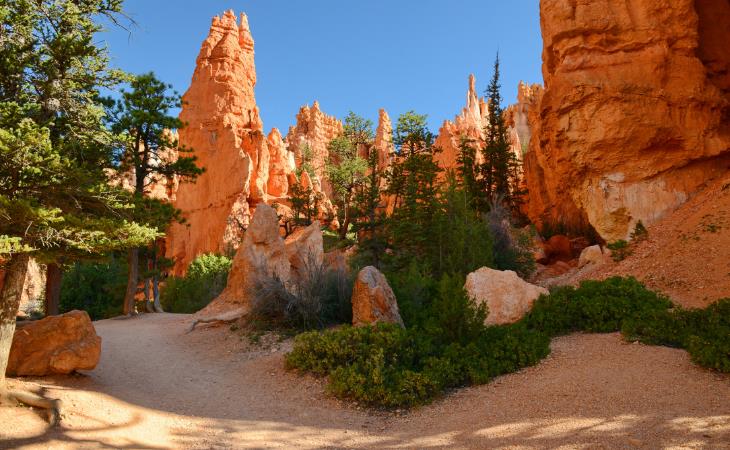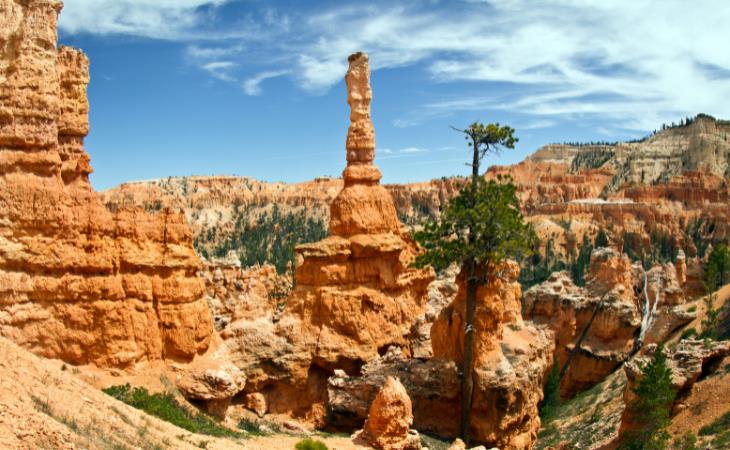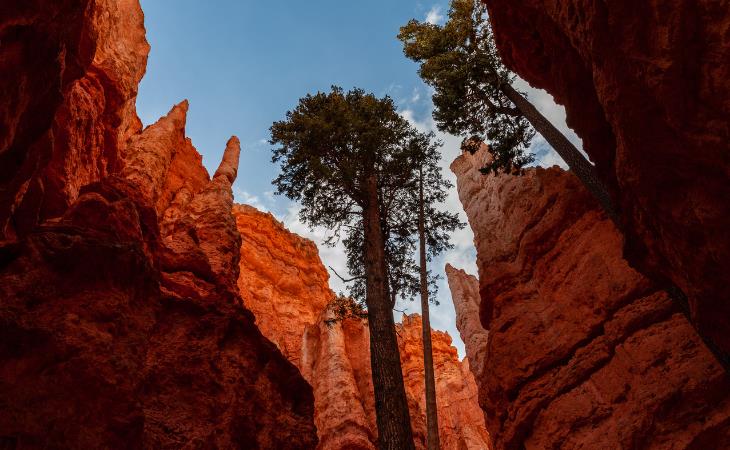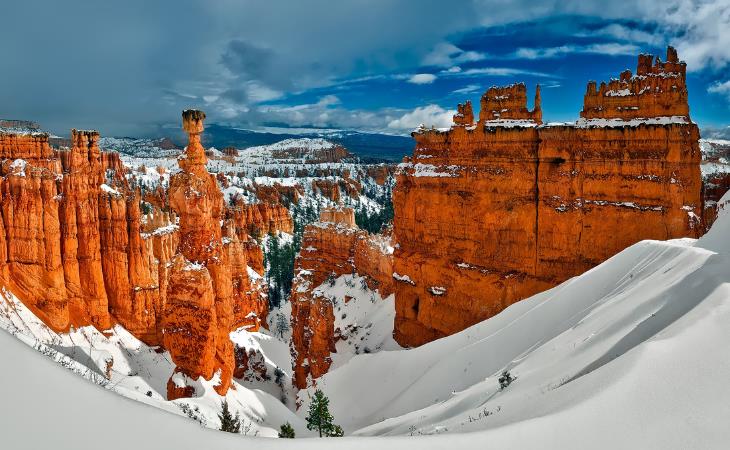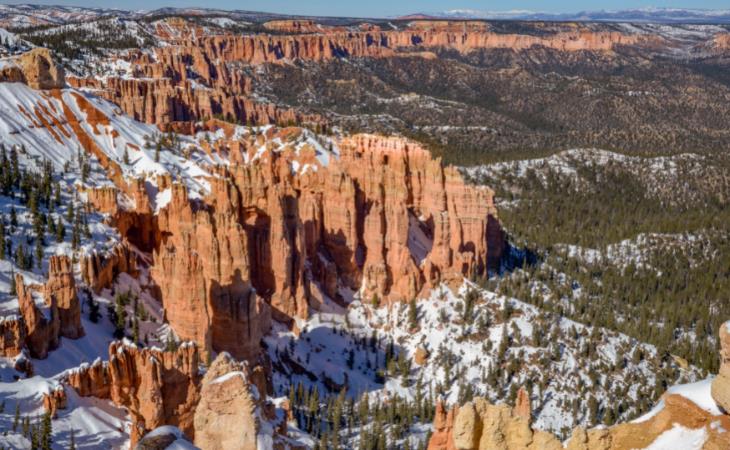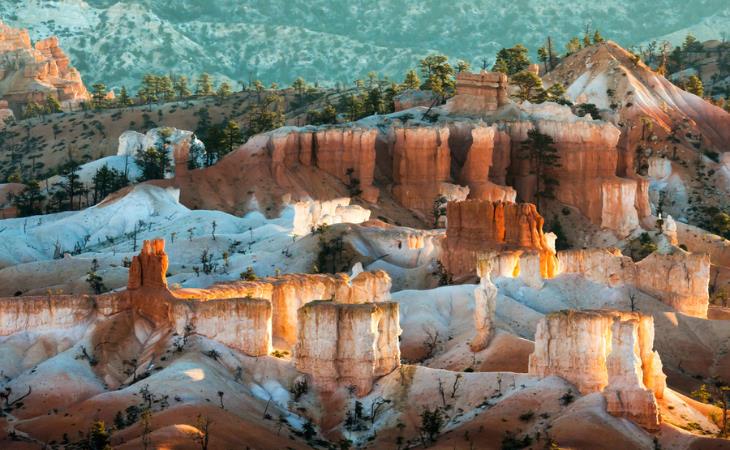Bryce Canyon is one of the five largest national parks in Utah. A canyon would be quite a misnomer, as it is not technically a canyon but a collection of natural amphitheaters carved into the edge of a high plateau. It houses the largest concentration of hoodoos (irregular columns of rock) on the planet. With two million visitors annually, this is definitely a park you should visit if you’re in the American southwest.
Hoodoos are natural rock formations that occur when a soft stone, such as sandstone, is surrounded by harder stones. The rain penetrates the crevices of the stone, and when it freezes and expands, it causes some of the rock to fall off, resulting in unique tall rock formations.
Scroll down for a video tour of the park
Know before you go
The park is open year-round, around the clock, including holidays. The admission fee with a vehicle is $35, and a shuttle to the main points in the park is included in this price. It leaves every 15 minutes. In the cold season, there are constant maintenance works to remove snow from the trails. If you arrive before sunrise, the pin booth will be empty. You’ll be paying on your way out. Pets are allowed in the park but only on paved trails, which are pretty short and don’t go deep into nature.
Natural bridge viewpoint
The four main interest points are Bryce Point, Inspiration Point, Sunset Point, and Sunrise Point. Nighttime at the park offers a natural night sky with no light pollution. If you’re an adventurer, you can join a moonlight tour or go skiing or snowshoeing in the winter (available for rent on-site). For a more laid-back experience, there are easy hiking trails, bicycle trails, and a scenic drive of 18 miles.
The most famous point to the park, Bryce Point, is accessible by wheelchair and will offer the most breathtaking sunset view over the entire amphitheater.
One of the two most elevated points in the park, Rainbow Point, was lifted from sea level over the last 20 million years by tectonic movement. It was dissected into different parts by the Colorado river according to the National Park Service website.
The five easiest hikes at Bryce Canyon
We’ll share the five easiest hikes at Bryce Canyon below:
1. Sunset to Sunrise Point
This is a one-way trail (not a loop) of just 1 mile. It may take up to 1 hour to complete, and it is paved all the way through and offers a view of the amphitheater below.
2. The Rim Trail
Enter and exit the trail at any point you like: Inspiration Point, Sunset Point, and Sunrise Point. Notice that this trail is not a loop. Any section you decide to hike will offer a scenic view into the canyon and a comfortable walk with no extreme elevation. For further information on the Rim Trail, click here.
At Inspiration Point, the elevation is 8,100 ft. This is a great place to watch the sunrise. You can see the entire amphitheater and all the way across to the hoodoos.
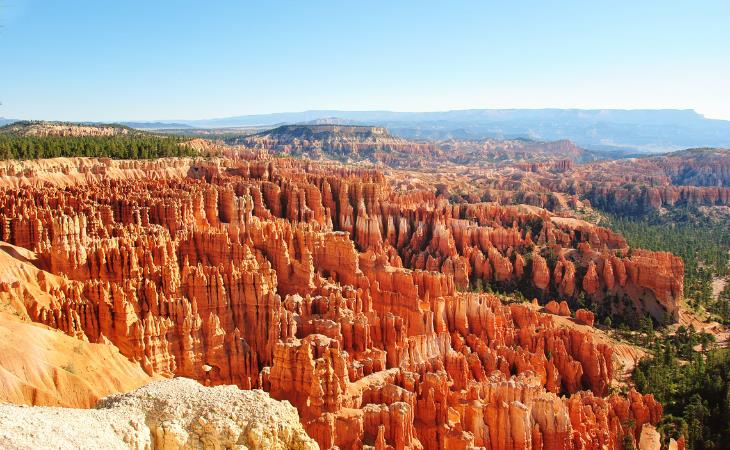
3. Bristlecone Loop
This trail stretches for 1 mile and may take up to 1 hour to hike. Enter the loop trail at Rainbow Point to enjoy your walk in the forest at an elevation of over 9,100 ft, where you will pass by pines that are over 1,800 years old. For further information on the Bristlecone Loop, click here.
4. Mossy Cave
This is the most popular and crowded trail at the park. It may take up to 1 hour to finish, stretches over 0.8 miles, and is not a loop. The Mossy Cave is one of the lowest elevation hikes in the park. It begins with a climb and ends with a descent, and not vice versa like the vast majority of Bryce Canyon’s trails. For further information on the Mossy Cave trail, click here.
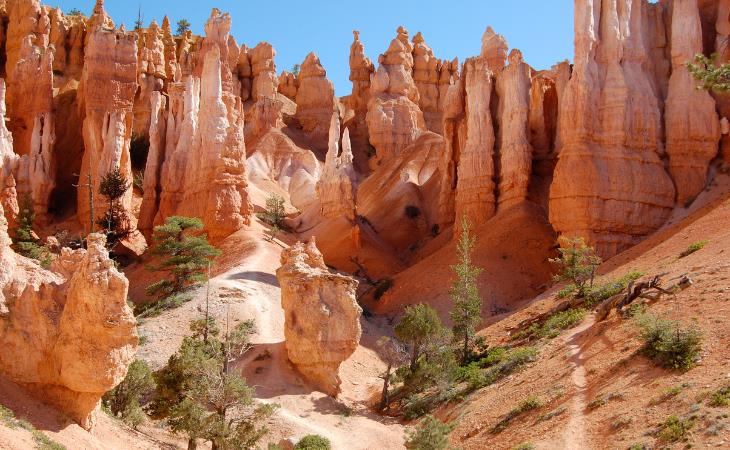
5. Queen’s Garden
This trail is considered moderately difficult, but we had to share it anyway, as it is the easiest trail that goes down into the canyon. It may take up to 2 hours to finish, stretches over 1.8 miles, and is not a loop. On the way back, there will be a relatively steep half-an-hour climb.
On your hike, you may come across some of the wildlife that migrates through Bryce Canyon. This includes migratory hummingbirds, nesting Peregrine falcons, Rocky Mountain elk, and pronghorns.
The park is breathtaking even in winter!

